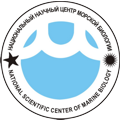 |
Laboratory of Marine Microbiota
Scientific Head: Tatyana Yuryevna Orlova, a leading researcher, Cand. Sci. Biol., senior researcher, has managed the Laboratory since 2017.
Main fields of research:
- Study of microalgae biodiversity in the Far Eastern seas of the Russian Federation.
- Monitoring of harmful algae and biotoxicity in marine waters of the Far Eastern seas.
- Study of biodiversity of marine filamentous fungi and heterotrophic organisms.
- Study of marine microbiomes and interaction of their components (microalgae and associated fungi and bacteria) with each other.
- Search for bacteria producing physiologically active substances. Analysis of toxicity of bacterial isolates using various biological models.
- Cultivation of marine microalgae and microorganisms.
- Collection, documentation, and deposition of biological specimens in compliance with international biobanking standards and using up-to-date equipment.
Approaches and methods used:
- Method for classical identification of plankton and benthic microalgae based on morphological traits and using light and electron microscopy.
- Method for obtaining and maintaining dinoflagellate cultures from resting cysts.
- Methods for cultivating dinophytes, diatoms, raphydophytes, cryptophytes, and green algae.
- Method for studying the structure of fungi using transmission light microscopy.
- Method for determining the level of domoic acid in laboratory-reared cultures of diatoms through competitive enzyme immunoassay.
- Methods for counting number of cells, measuring the optical density of solution (absorbance), and determining the intensity of fluorescence at a specified emission wavelength using multi-well plates or a cuvette module on a Spark 10M Tecan multimode microplate reader.
- Methods for isolating bacteria from various natural objects, their cultivation and identification.
- Method for analyzing antimicrobial properties of bacteria.
- Method for analyzing bacterial antibiotic resistance.
Range of organisms and object under study; geography of research
Unicellular algae (dinophytes, diatoms, raphydophytes, chrysophytes, cryptophytes, green algae, and euglenophytes) of plankton, epiphyton, and benthos, dinoflagellate cysts, marine filamentous fungi, and heterotrophic bacteria from the Sea of Japan/East Sea, Sea of Okhotsk, Bering Sea, and Laptev Sea.
Laboratory instrument base:
- Optical, including inverted and fluorescent, microscopes.
- Climate chambers with adjustable illumination and temperature.
- Autoclaves.
- Laminar flow cabinets.
- Centrifuges.
- Integrated laboratory for the quantification of phycotoxins by the method of competitive enzyme immunoassay.
Information provided by the researcher T.V. Morozova.
| Contacts: |
|
Palchevskogo str. 17 |
|
Vladivostok, Russia, 690041 |
|
Phone: +7 (423) 2310905 |
|
Fax: +7 (423) 2310900 |

